How climate change is killing Japan’s salmon trade one melted ice cap at a time
The number of salmon fished in the north Pacific has fallen by 70 per cent in the past 15 years. It won’t be here for much longer, warn Simon Denyer and Chris Mooney
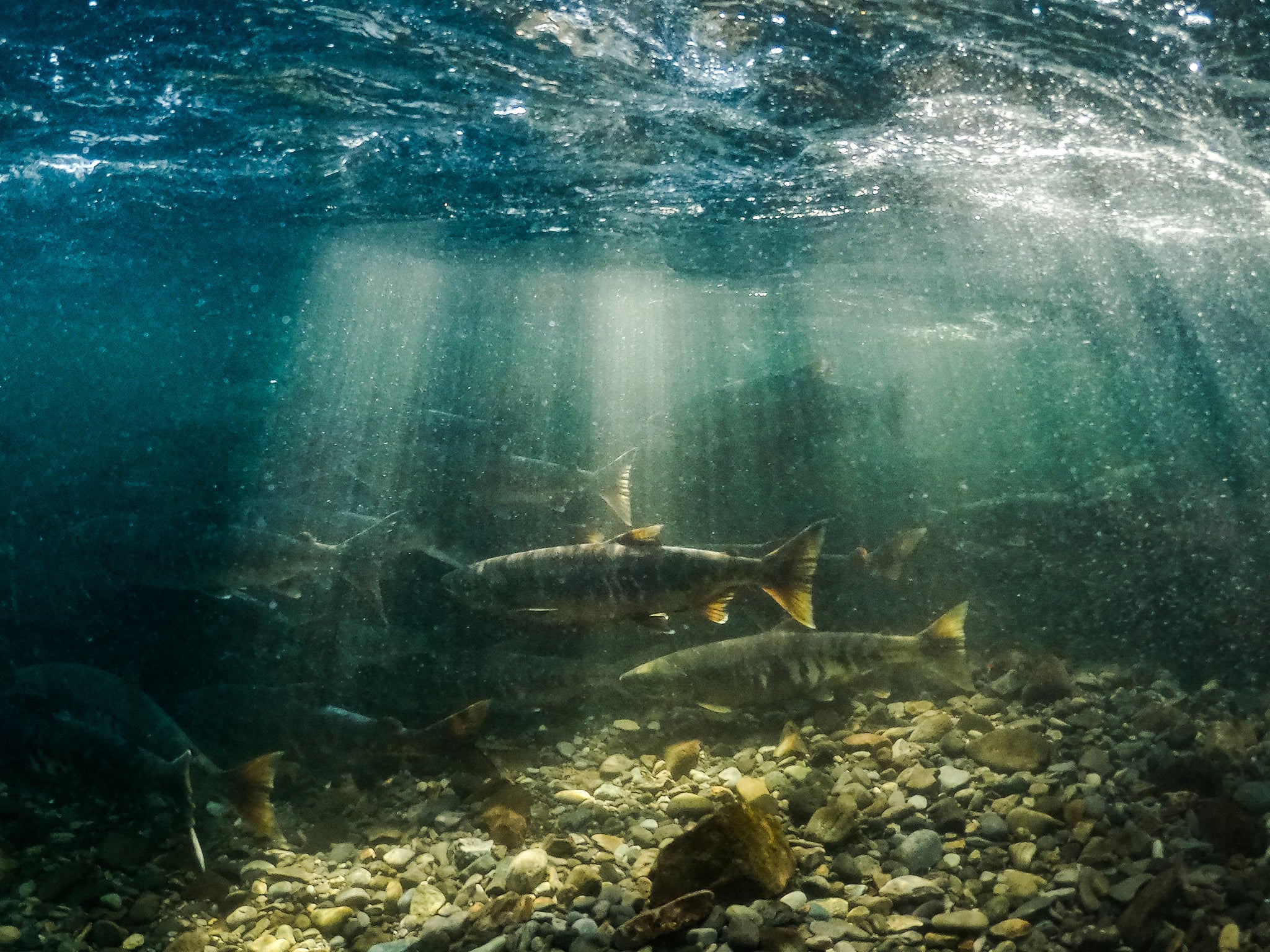
Your support helps us to tell the story
From reproductive rights to climate change to Big Tech, The Independent is on the ground when the story is developing. Whether it's investigating the financials of Elon Musk's pro-Trump PAC or producing our latest documentary, 'The A Word', which shines a light on the American women fighting for reproductive rights, we know how important it is to parse out the facts from the messaging.
At such a critical moment in US history, we need reporters on the ground. Your donation allows us to keep sending journalists to speak to both sides of the story.
The Independent is trusted by Americans across the entire political spectrum. And unlike many other quality news outlets, we choose not to lock Americans out of our reporting and analysis with paywalls. We believe quality journalism should be available to everyone, paid for by those who can afford it.
Your support makes all the difference.Lined up along the side of their boat, the fishermen haul a huge, heavy net up from swelling waves. At first, a few small jellyfish emerges, then a piece of plastic. Then net, and more net. Finally, all the way at the bottom: a small thrashing mass of silvery salmon.
It’s just after dawn at the height of the autumn fishing season, but something is wrong.
“When are the fish coming?” boat captain Teruhiko Miura asks himself.
The salmon catch is collapsing off Japan‘s northern coast, plummeting by about 70 per cent in the past 15 years. The disappearance of the fish coincides with another striking development: the loss of a unique blanket of sea ice that dips far below the Arctic to reach this shore.
The twin impacts – less ice, fewer salmon – are the products of rapid warming in the Sea of Okhotsk, wedged between Siberia and Japan. The area has warmed in some places by as much as 3C since preindustrial times, making it one of the fastest-warming spots in the world, according to data from the nonprofit organisation Berkeley Earth.
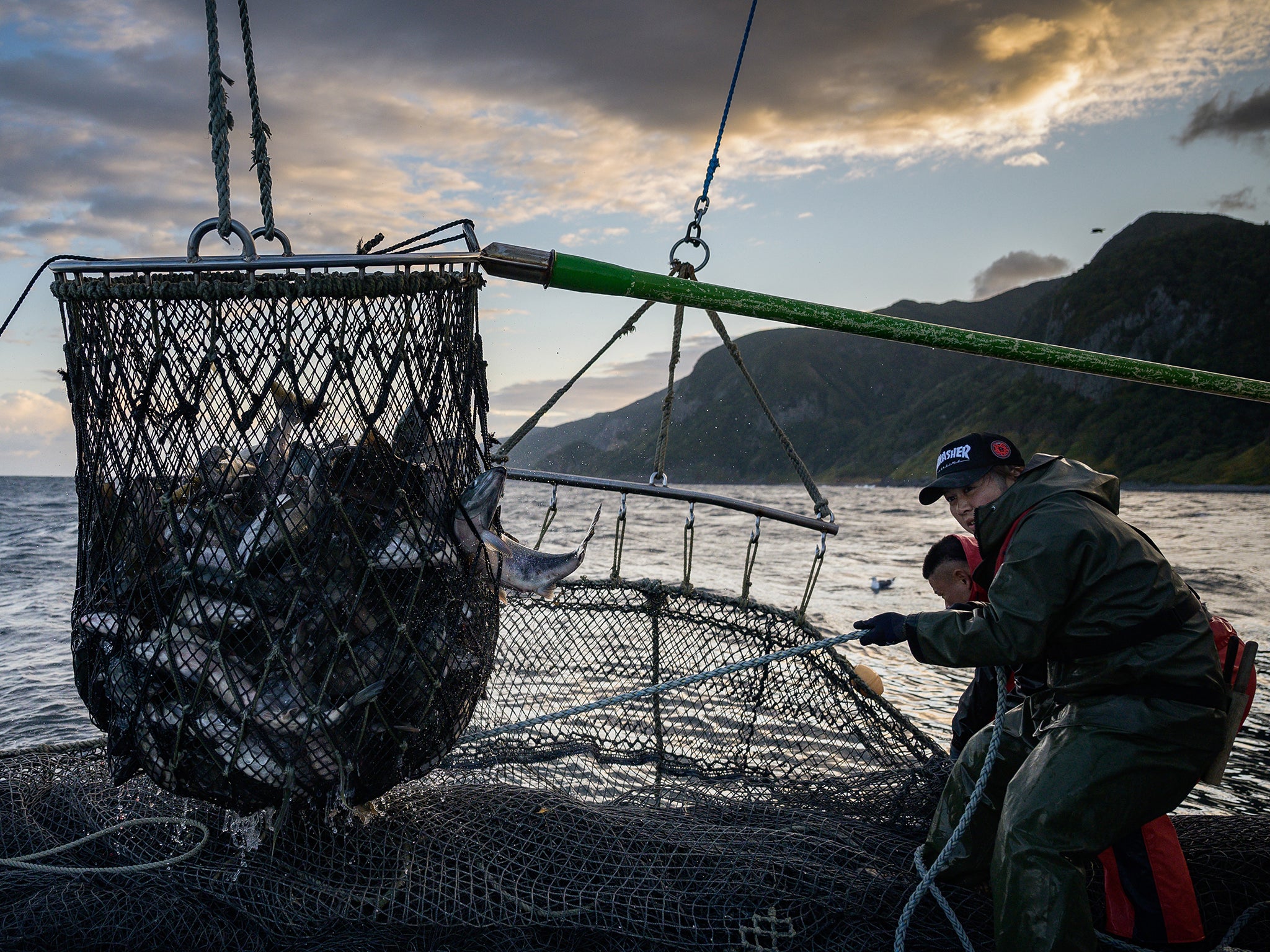
That increase far outstrips the global average and exceeds the limit policymakers set in Paris in 2015 when they aimed to keep Earth’s average temperature rise “well below” 2C.
The rising temperatures are starting to shut down the single most dynamic sea ice factory on Earth. The intensity of ice generation in the northwestern Sea of Okhotsk exceeds that of any single place in the Arctic Ocean or Antarctica, and the sea ice reaches a lower latitude than anywhere else on the planet. Its decline has a cascade of consequences well beyond Japan as climate dominoes begin to fall.
When sea ice forms here, it expels huge amounts of salt into the frigid water below the surface, creating some of the densest ocean water on Earth. That water then sinks and travels east, carrying oxygen, iron and other key nutrients out into the northern Pacific Ocean, where marine life depends on it.
As the ice retreats, that nutrient-rich current is weakening, endangering the biological health of the vast northern Pacific – one of the most startling, and least discussed, effects of climate change so far observed.
“We call the Sea of Okhotsk the heart of the North Pacific,” says Kay Ohshima, a polar oceanographer at the Institute of Low Temperature Science at Hokkaido University. “But the Sea of Okhotsk is significantly warming, three times faster than the global mean. “That causes the power of the heart to weaken.”
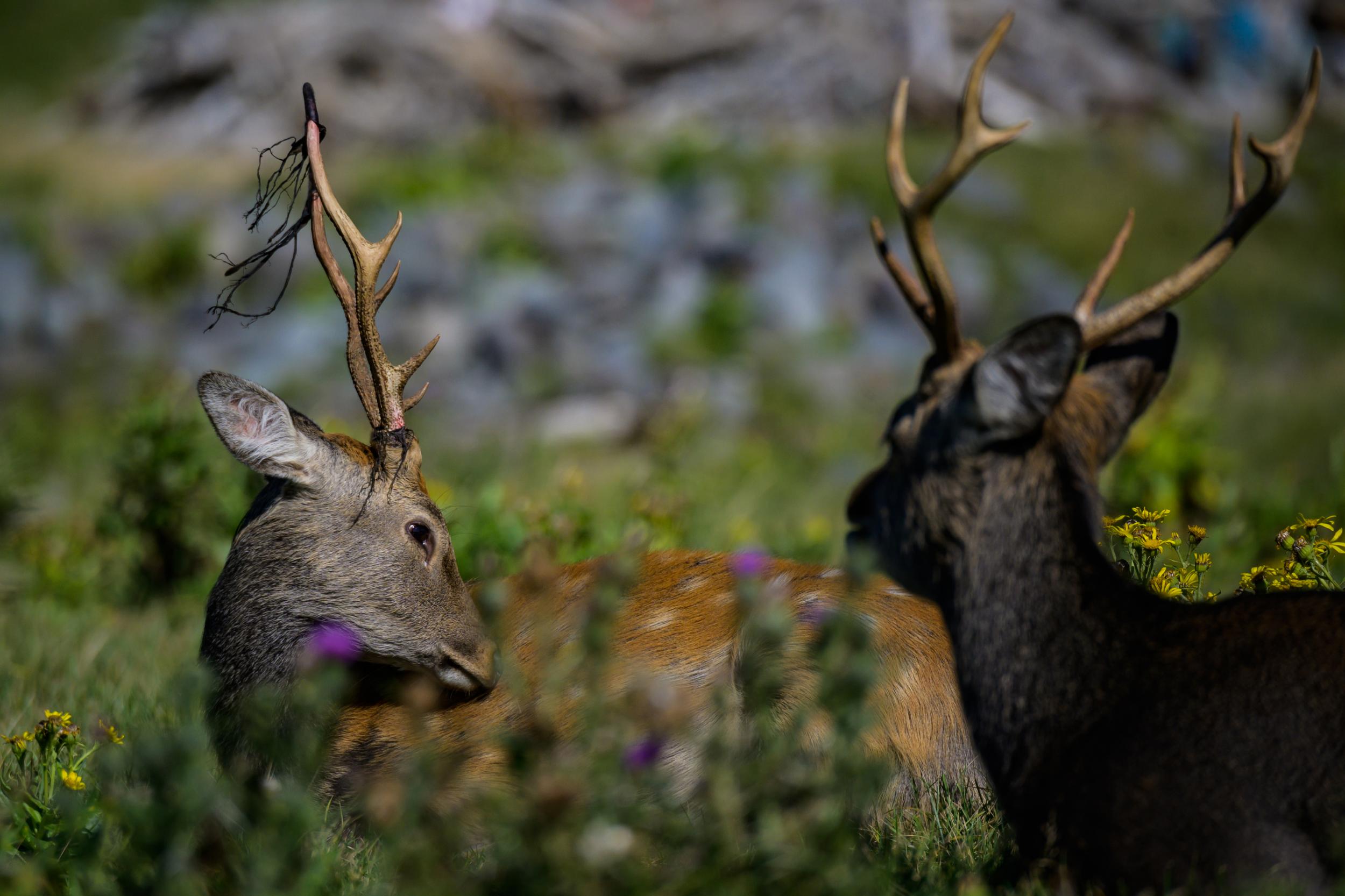
The cascade starts more than a thousand miles away in a uniquely frigid area of Siberia known as the “Cold Pole”, where the coldest temperature ever recorded in the Northern hemisphere (-67.7C) was measured in 1933.
The Cold Pole, too, is warming rapidly, by about 2.7C since preindustrial times in the village of Oymyakon. That means the bitter north wind that blows down onto the Sea of Okhotsk is also warming.
The warmer wind inhibits the formation of sea ice. Across the Sea of Okhotsk, ice cover during the peak months of February and March has shrunk by nearly 30 per cent in the past four decades, a vanishing of about 130,000 square miles of ice, an area larger than Arizona.
Masanori Ito, 67, senior executive director at the Okhotsk Sightseeing Federation, recalls how, during his childhood, the ice would drift down from the sea’s northern reaches – a thick, white carpet descending on Abashiri, a city on the northeastern shore of Hokkaido, Japan’s northernmost prefecture.
“The drift ice used to arrive with a force, pushed and pushed from behind, from far out at sea,” he says. It would pile up upon itself, forming “mountains over 10 meters high”.
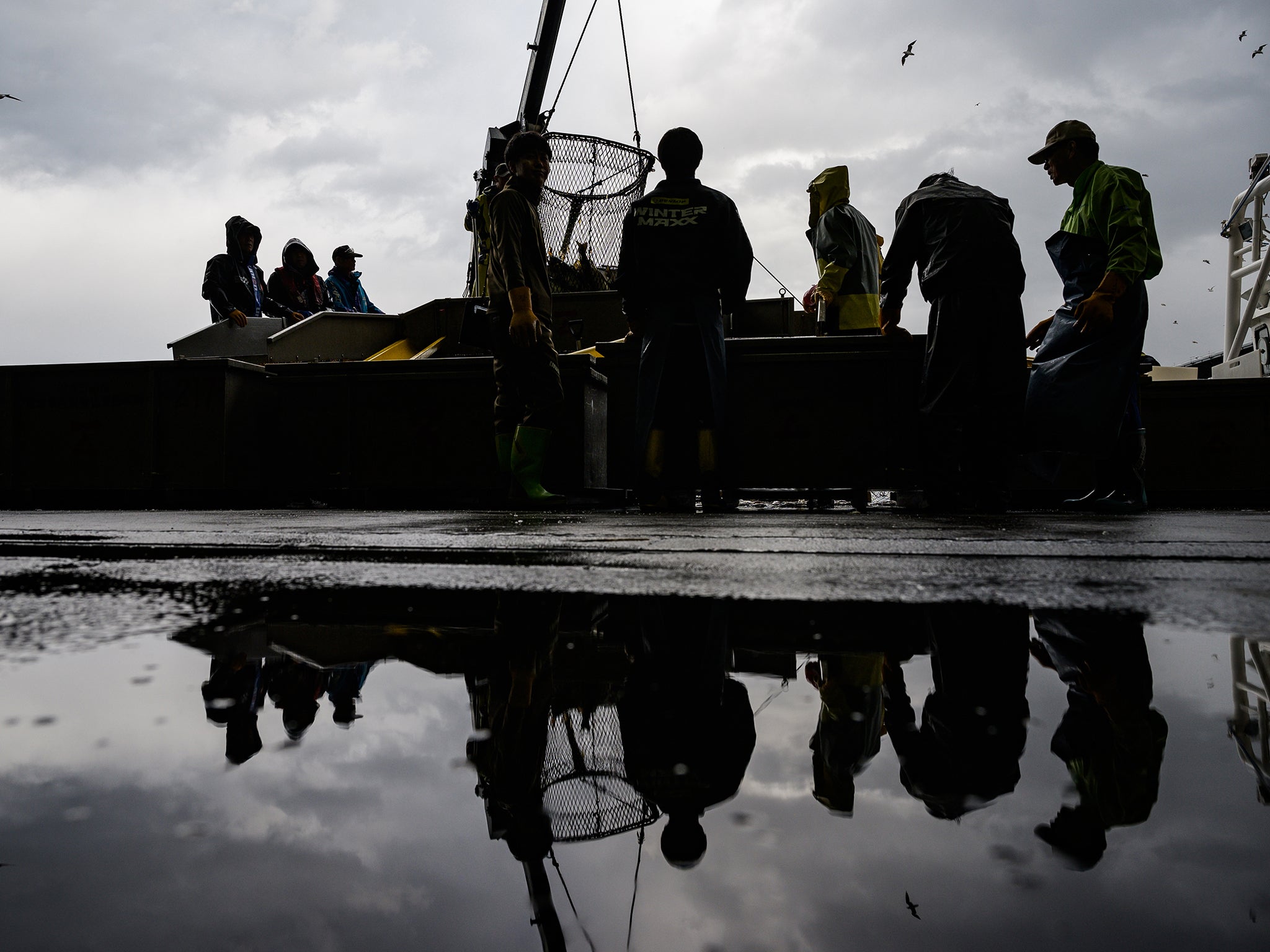
Today, those mountains are long gone, and the coast of Hokkaido is hemmed in by ice for fewer than 25 days a year on average, says Arctic scientist Shuhei Takahashi, who runs the Okhotsk Sea Ice Museum of Hokkaido in Mombetsu.
A century ago, the coast typically had ice for more than 50 days each winter, Takahashi says; based on current trends, the drift ice could disappear entirely by the end of this century.
Meanwhile, the ice itself is also changing. Those who know it well say it sounds different, less intense, no longer an indomitable winter colossus.
“Years ago, our nose hair froze and stuck out. And our eyelashes would get moist and go all white,” says Shigeru Yamai, 66, captain of the icebreaker Garinko II. “When we walked on the ice, we heard squeaking sounds. The sound today is different. It hardly gets that severe anymore.”
* * *
For fisherman Nobuo Sugimura, 63, the changing climate is evident in his steadily diminishing catch. At home after a fishing trip on Miura’s vessel the Hokushin Maru, Sugimura brings out his logbooks and diaries, pulling records for his most recent catch in late September and for the same period seven years ago.
In 2012, Sugimura’s records show he and fellow crew members brought in between 21 and 52 metric tons of fish per day. This year, the catch one day was a meagre six tons.
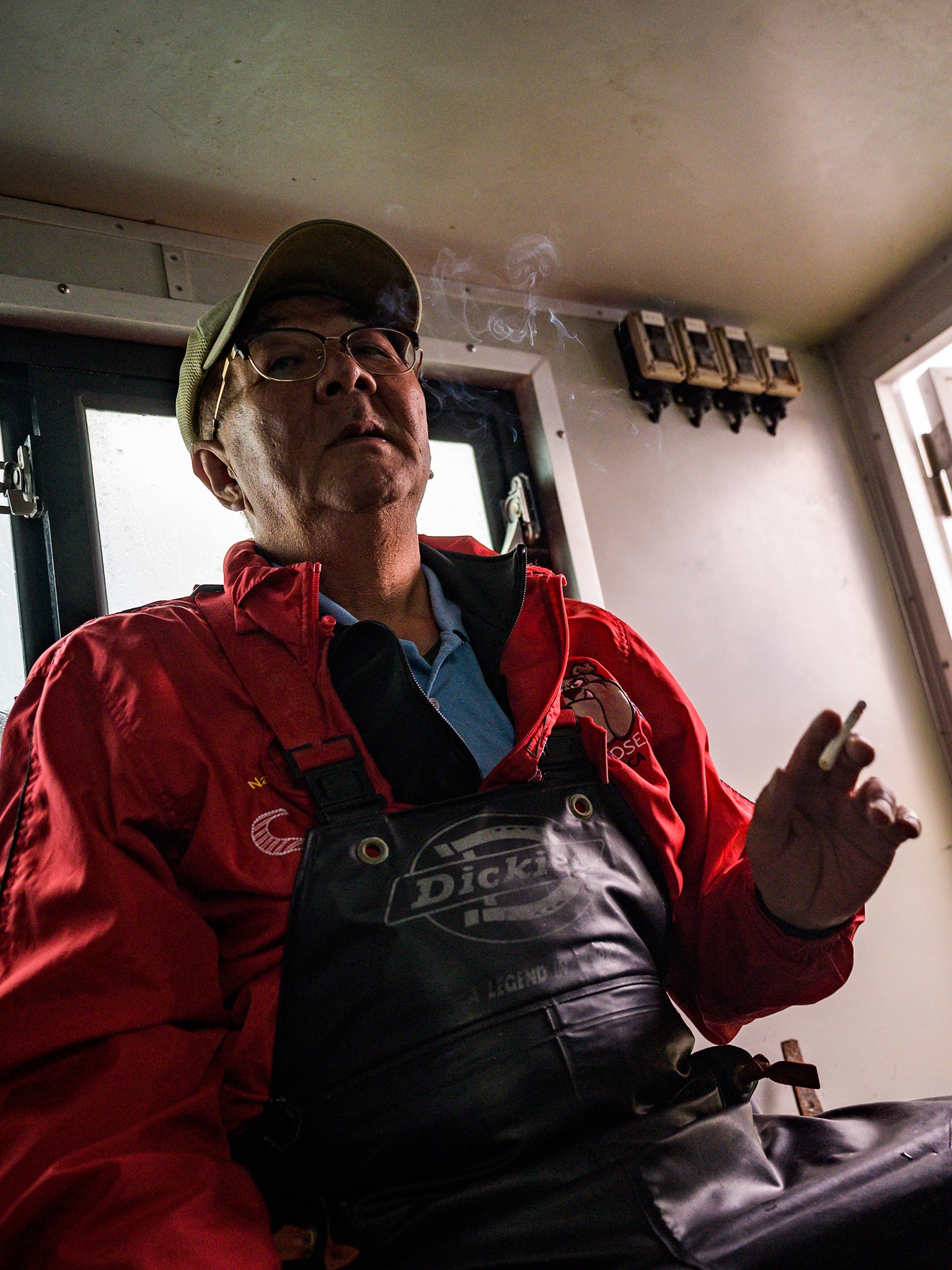
“We had a bad time 30 or 40 years ago, and this reminds me of that,” he says. “But that only lasted a year or two, not this long.”
In the nation that invented sushi, there is no region better known for its seafood than Hokkaido. And there is no fish more synonymous with Hokkaido, more central to its culture, than the salmon.
The relationship stretches back as long as humans have lived here. The indigenous Ainu people had 133 words for salmon and used its skin to make boots. The fish and its orange roe are critical ingredients in Hokkaido’s famous seafood sashimi rice bowl, savoured by foodie tourists across this gourmet nation. The image of a bear clamping a salmon between its powerful jaws is an iconic symbol of Hokkaido, reproduced on T-shirts and in wood carvings on sale in almost every souvenir shop.
Though Hokkaido’s salmon hatcheries are working harder than ever, releasing a billion juvenile fish into the island’s rivers every spring, the number of returning chum salmon has declined sharply, from 68 million fish in 2003 to just 28 million in 2018. Nationwide, Japan’s annual chum salmon catch has also fallen from 258,000 metric tons in 2003, when a sharp decline began, to 80,000 last year, according to the North Pacific Anadromous Fish Commission.
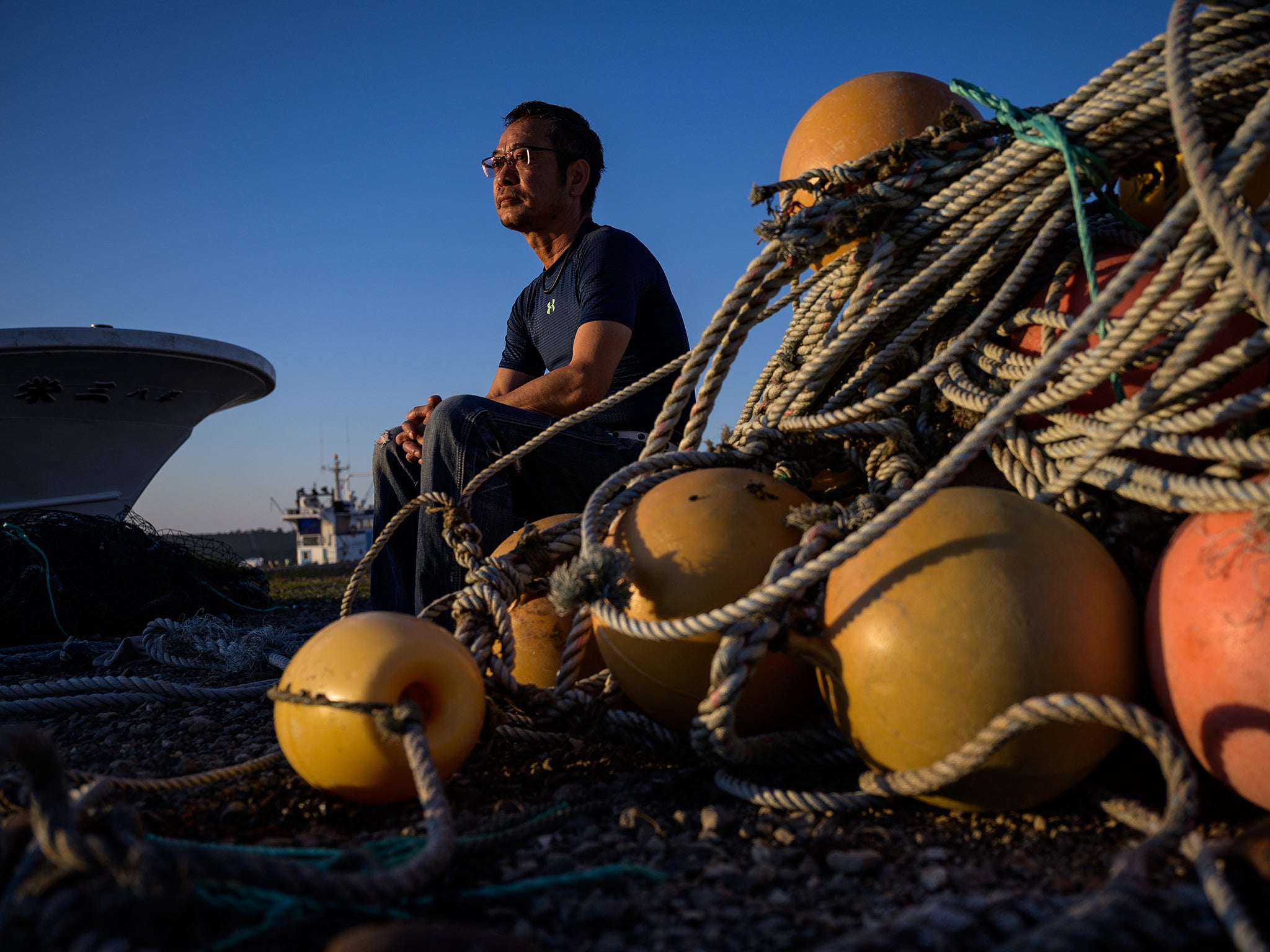
Salmon are highly sensitive to changes in water temperature. As they swim into the Sea of Okhotsk at the start of their long migration across the Pacific, the warmer waters act as a force field, pushing them off their ancient track.
Compelled to travel faster and farther to reach cooler northern waters, the young salmon use up stores of energy when they can least afford it. If they delay their departure date, they won’t survive at all.
Masahide Kaeriyama, an emeritus professor in the Arctic Research Center at Hokkaido University, says Japanese salmon migrate up what he calls a “ladder” of suitable temperatures. For more than a decade, he has been predicting that climate change would cut Hokkaido’s salmon catch in half. Now, he says global warming is happening even faster than he expected.
“As the optimal temperature moves away from Hokkaido, the ladder of migration is being taken away,” he adds.
Japan’s loss has been Russia’s gain. Waters near the Siberian coast – once too cold for salmon – are now in the optimum range for the fish. Even as Japan’s catch began to decline in 2003, Russia’s chum salmon quadrupled to a record high of nearly 144,000 metric tons in 2015. The same phenomenon is happening around the world, as warmer waters cause key species to seek cooler habitats closer to the poles. The lobster population off the northeast coast in the United States is seeing a similar disruption.
If the Hokkaido salmon survive the first leg of their journey, they move into the Bering Sea, and then on to the Gulf of Alaska for their second winter. By the age of four or five, they return to Japan, to the very same river where they hatched.
The smaller number of returning fish is keenly felt on Hokkaido’s Shiretoko Peninsula, home to the largest concentration of brown bears in the world. Each fall, as the salmon amass offshore, the bears are waiting, splashing in the streams at the mouth of every river. Here, the iconic image of a bear catching a salmon comes to life.
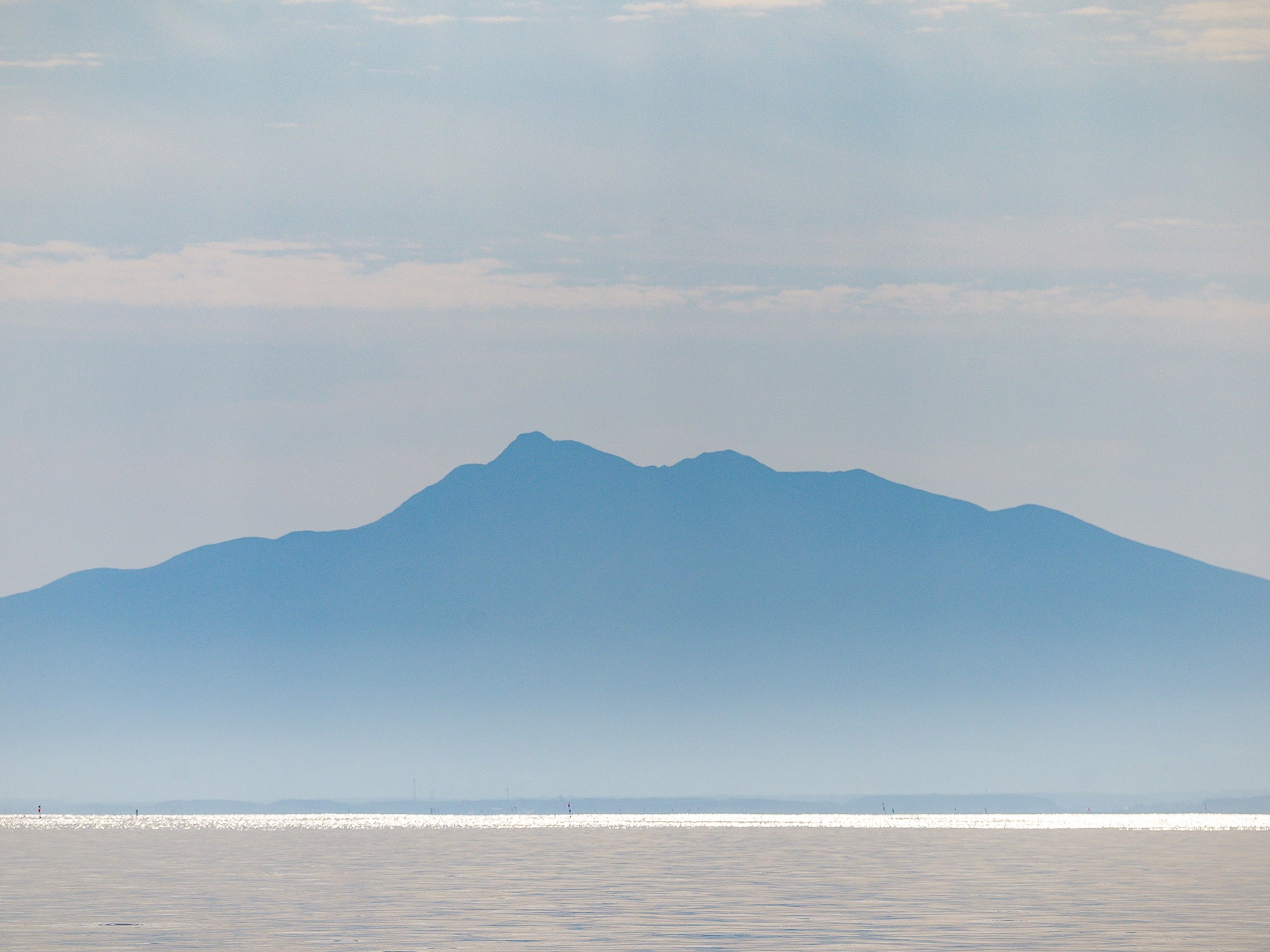
Salmon nourish the bears, and the bears’ leftovers discarded in the forest nourish birds, insects and plants, creating “one of the richest integrated ecosystems in the world”, according to Unesco, the educational, scientific and cultural agency of the United Nations.
Unesco made Shiretoko National Park a World Heritage Site in 2005. But as the drift ice recedes and the salmon catch shrinks, Unesco worries that the park’s unique ecosystem will be irrevocably damaged.
“Japanese people see salmon as a source of food,” Kaeriyama says. “But salmon is, in fact, the very foundation of the ecosystem where we live.”
* * *
The link between sea ice and prosperity is not lost on the towns and cities of northern Hokkaido and the Shiretoko Peninsula, where the ice drives a vital tourism industry.
In the spring, as the ice melts and sunlight hits the water, the sea blooms with phytoplankton, the anchor of marine life and the base of the ocean’s food web.
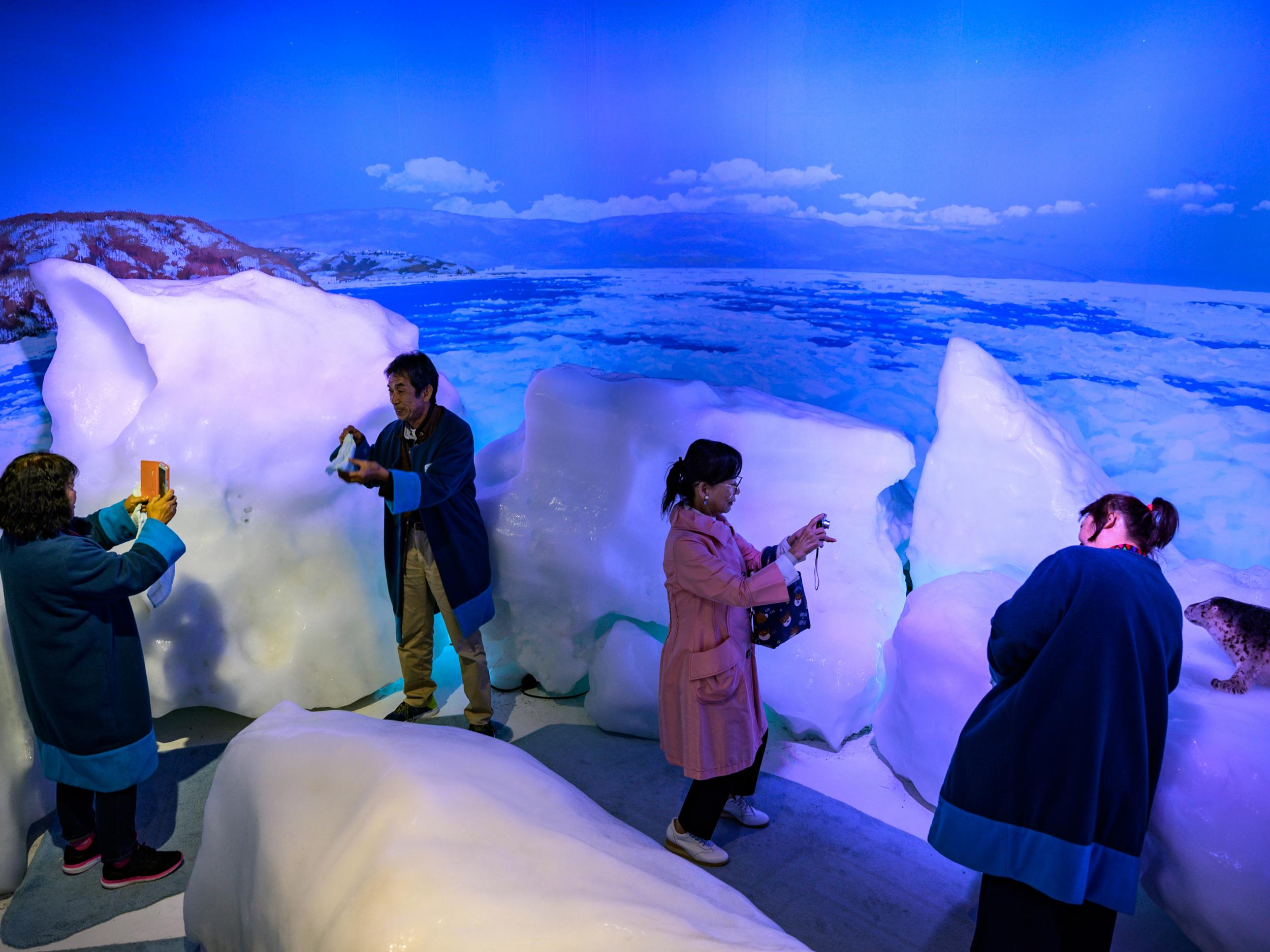
That makes the Sea of Okhotsk a spectacularly bountiful stretch of water, home to whales and dolphins, sea lions and seals, scallop and crabs, and hundreds of species of fish. Its shores provide homes to many migratory and sea birds, from the largest owl in the world – the endangered Blakiston’s fish owl – to the heavy Steller’s sea eagle.
In Abashiri alone, about 110,000 people, nearly half of them foreigners, took sightseeing cruises last year across the vast expanse of sea ice. On the eastern side of the peninsula, tourist boats set out from the town of Rausu every winter to gaze at eagles perched on the ice and seals bobbing through it, and in the spring, summer and fall to watch humpback, sperm and killer whales splash through the waves.
Meanwhile, key nutrients, especially iron, flow into the Sea of Okhotsk from Russia’s Amur river. Undersea currents carry those nutrients into the north Pacific, forming an intermediate layer of water roughly 600-2,600 feet below the surface. Eventually, the water rises back up, bringing the iron that is vital for phytoplankton with it.
The Okhotsk sea ice decline jeopardises that giant convection current. Ohshima, his fellow scientists from Hokkaido University and other institutions in Japan have documented a marked warming in the north Pacific’s intermediate layer, much more rapid than the general warming of the ocean – a sign that less cold, dense water is being formed in the Sea of Okhotsk.
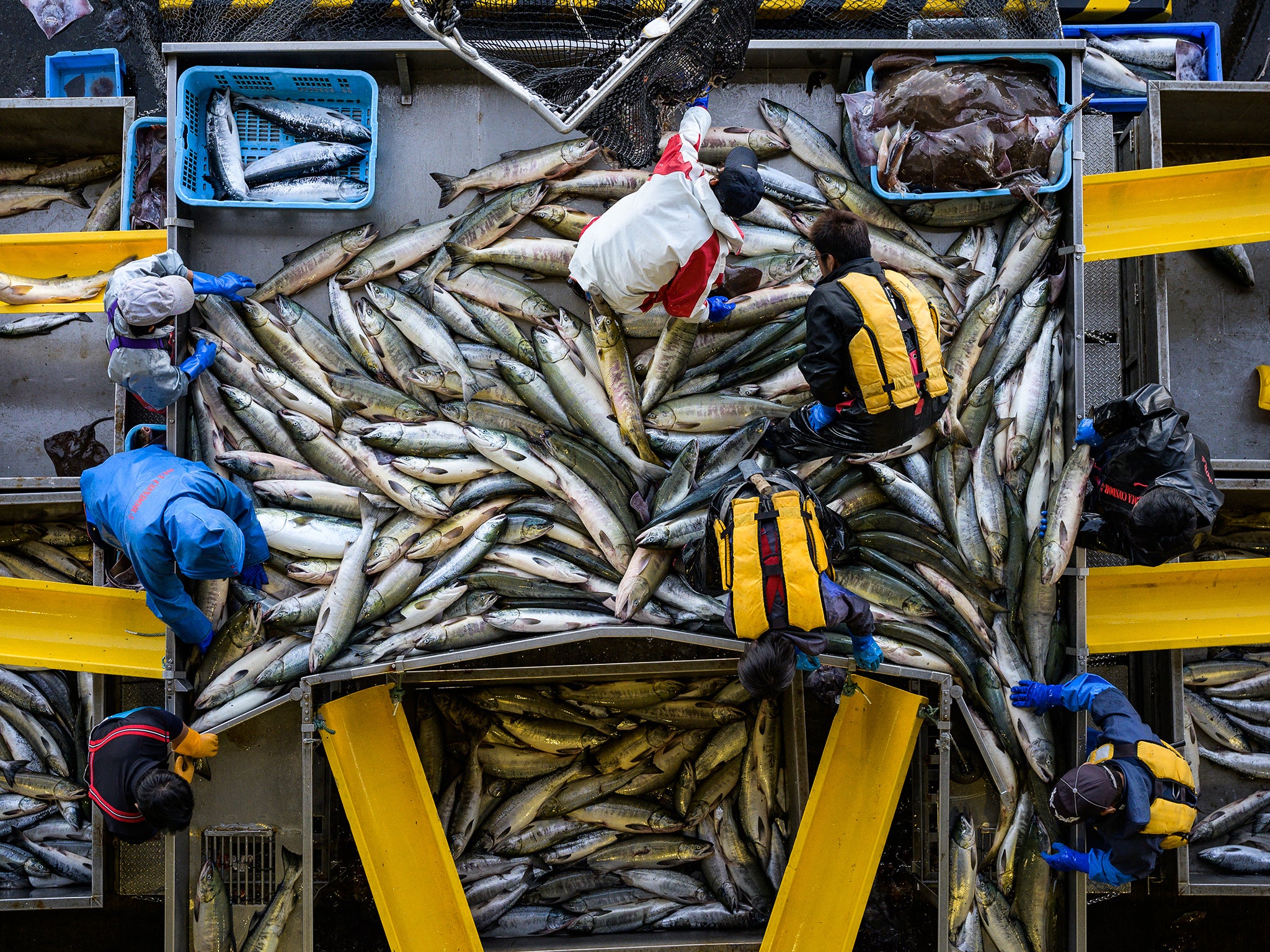
Scientists have also documented growing zones in the north Pacific, at depths of about 1,300 and 2,300 feet, where ocean oxygen levels are in fast decline.
In other words, the “heart of the Pacific” is indeed weakening. The scientists don’t know all of the consequences yet, but they’re worried because of the irreplaceable contribution of the Sea of Okhotsk to a much larger region.
* * *
Back on Hokkaido, the falling salmon catch is triggering cascading economic impacts.
Last year, salmon processors paid high prices for dwindling supplies of Japanese chum salmon, only to find that consumers weren’t prepared to pay more. Japanese salmon was soon displaced by cheaper imports from places such as Norway, Chile, Russia and Alaska.
Tetsuya Shinya, head of the Abashiri Fisheries Cooperative, says he is reluctantly considering something once unthinkable: raising salmon on fish farms.
“It’s still not the right time to do it,” he says. “Even so, I feel we are getting into a pretty tough time.”
Wild salmon tend to be hardier and more resistant to changing temperatures than salmon reared in the more-controlled environment of a hatchery. One solution is a campaign to reduce Hokkaido’s dependence on salmon hatcheries by encouraging more wild salmon to return to the island’s rivers.
Scientists and volunteers are clearing rivers along the Shiretoko Peninsula, where anything from silt to concrete dams can prevent wild salmon from returning to spawn.
Among the volunteers is Yuto Sugimura, 32, the son of the fisherman whose records document the salmon’s startling decline.
Yuto says he never used to think much about climate change beyond what he saw on the news. But as he dives into the sea to set salmon nets, he doesn’t need any records to tell him the temperature is rising.
“I’ve been going under the water for 15 years, but these days it feels quite lukewarm,” he says. “Until you feel it on your skin or experience it in reality, you don’t talk about [climate change]. Today, with the changes in the water, I am beginning to feel it on my skin, and I am beginning to think about it.”
© Washington Post
Join our commenting forum
Join thought-provoking conversations, follow other Independent readers and see their replies
Comments